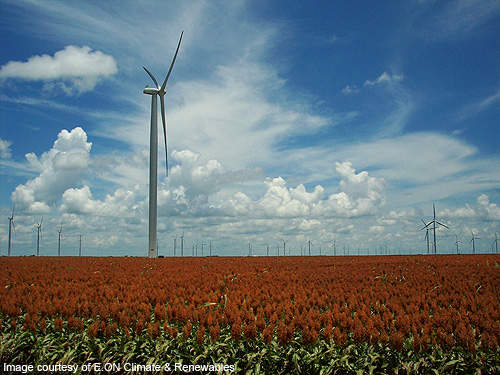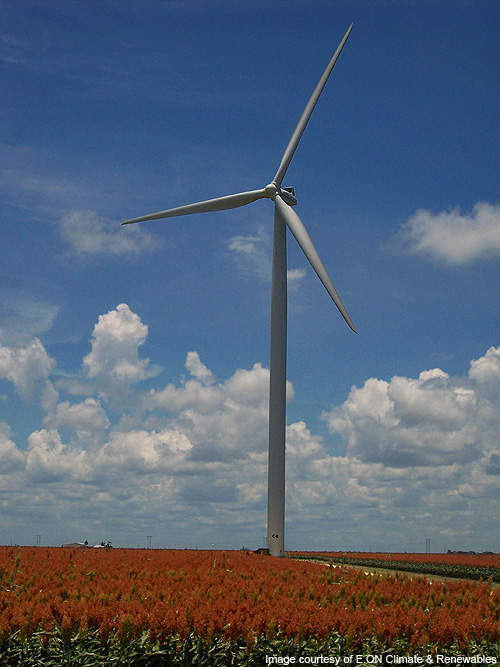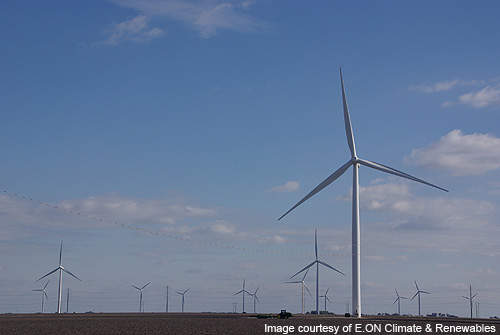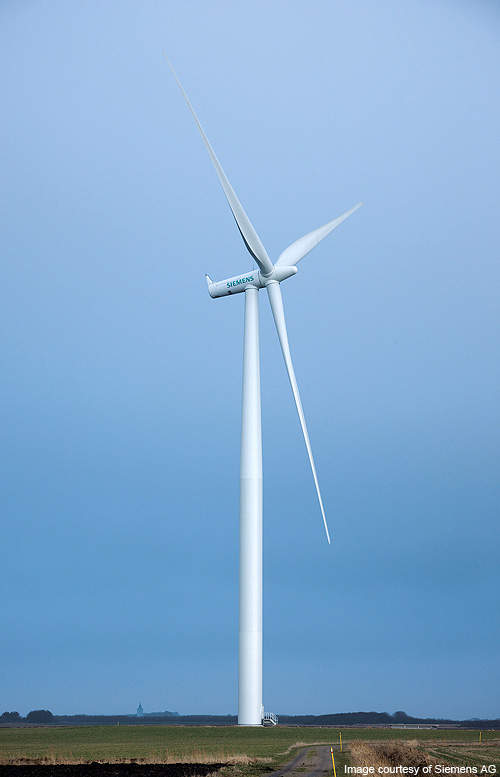The Papalote Creek Wind Farm is located in San Patricio County, 30 miles north of Corpus Christi in Texas, US.
The project has been developed in two phases and has a total installed capacity of 379.85MW. It is owned by E.ON Climate & Renewables (EC&R).
The project cost more than $460m. With the completion of phase II in November 2010, the wind farm had approximately 200 turbines. When phase II became operational in December 2010, the entire project began supplying power to more than 100,000 homes.
EC&R has signed 15-year and 18-year long-term power purchase agreements (PPA) for phase I and II respectively with different organisations.
Papalote Creek Wind Farm is the 13th operational wind farm built by EC&R in North America.
Papalote Creek wind farm details
The Papalote Creek wind farm was developed on a site between the Odem and Taft communities of San Antonia County. Existing transmission lines and strong winds throughout the year were some of the reasons behind the site selection.
Construction of Papalote Creek phase I began in April 2008 and it was commissioned in November 2009. It features 109 Vestas V82 turbines with a rated capacity of 1.65MW each. Phase I is currently generating 179.85MW of which 115.5MW is sold to the county’s municipal energy provider CPS Energy.
Around 65% of the installed capacity of phase I was sold even before the installation of the first turbine. Power generated by phase I is sufficient to power 54,000 homes.
Phase II involved the addition of 200MW to Papalote Creek I. Construction of this phase began in April 2010 with the installation of 87 Siemens 2.3MW SWT 2.3-101 wind turbines. This phase supplies power to 60,000 homes.
Power generated by phase II is purchased by the Lower Colorado River Authority (LCRA), which sells wholesale power to 43 public power utilities in Texas.
Development
Phase I turbines were installed by Mortenson Construction while the wiring was done by Georgia-based Sentry Engineering Group.
The turbines contract for Phase II was awarded to Siemens. The contract covered for transport and delivery of turbines along with maintenance and service for two years.
Technology
The Vestas V82 turbine has a diameter of 82m with a sweep area of 5,281m². It is 78m tall to the centre of the hub. It can operate at wind speeds as low as 3.5m/s and in temperatures as low as -30°C and as high as 40°C.
The V82 can be controlled on site with an option for remote control using a microprocessor-based turbine monitoring system. The turbine is suitable for large wind farms with low and medium wind conditions.
The hydraulic active-stall technology minimises loads and controls while generating maximum output. It also provides failsafe protection in low and non-wind periods.
The Siemens SWT 2.3MW wind turbine has a diameter of 101m with a sweep area of 8,000m². It is 80m from the centre of the hub. The turbine is most suitable for sites with moderate wind conditions. The advanced B49 blades allow for quiet operations of the turbine. It features an automatic lubrication system, internal climate control and a generator. The turbine design facilitates for long service intervals.
NetConverter technology installed in Siemens 2.3MW turbines assures maximum output while adjusting the turbine voltage and frequency variations. It features an integrated heat exchanger for cooling.
Texas power market
According to March 2010 estimates, Texas is the largest producer of wind energy in the US. With over 40 different wind power projects, the state has an installed capacity of 9,410MW. The second largest producer of wind energy is the state of Iowa with an installed capacity of 3,670MW.
There has been tremendous growth in the number of wind farms over the last decade in Texas. The nameplate capacity has grown from 180MW in 1999 to 4,296MW in 2007, representing a growth of over 200%.
Texas is also home to the largest wind project in the world, the 741MW Roscoe wind farm.
Texas has a target of producing 5,000MW from renewables by 2015. To accommodate the increased power supply, The Public Utility Commission has approved the construction of transmission lines to carry up to 18,456MW of wind power from west and north Texas to the metropolitan areas. These lines will be brought into service by 2011-2013.







